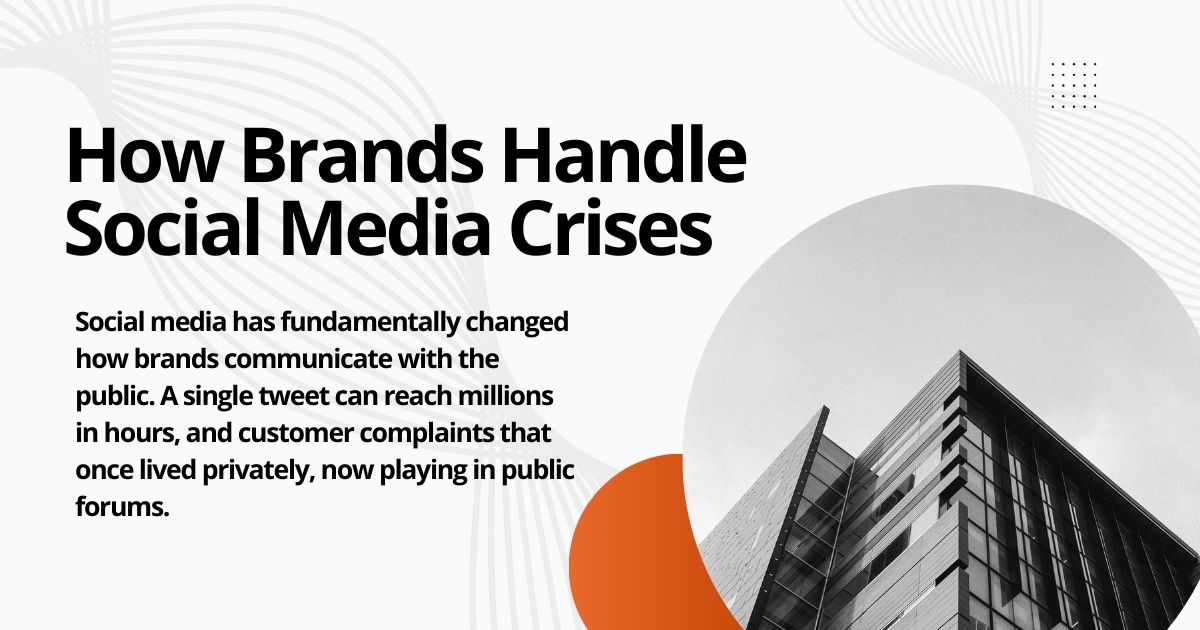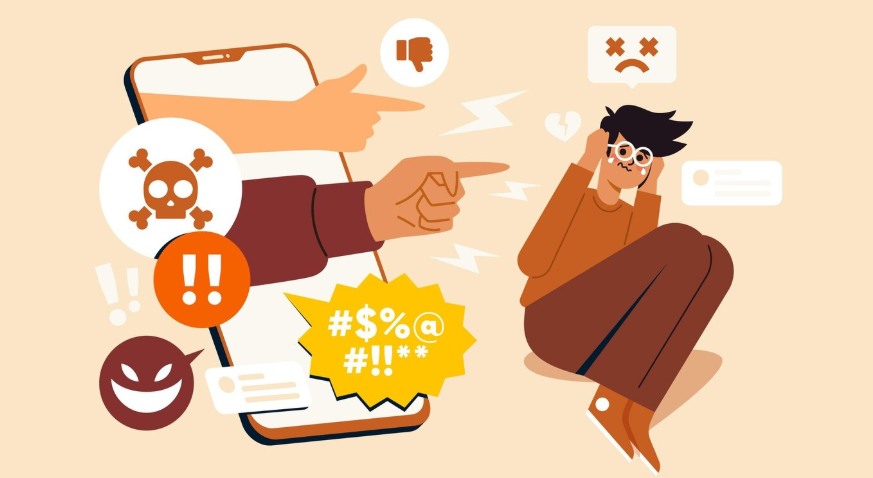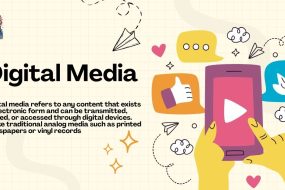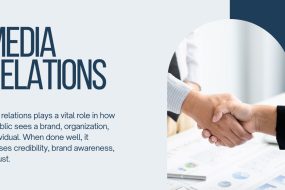
When brands mess up on social media, the world watches. One poorly crafted response can turn a minor issue into a viral disaster, while a genuine apology can rebuild trust and even strengthen customer relationships.
Corporate apologies have become a crucial part of modern brand management. With social media amplifying every misstep, companies must master the art of saying sorry publicly. This post examines real corporate apology examples from social media, breaking down what works, what doesn’t, and how your brand can navigate these challenging situations.
Why Corporate Apologies Matter More Than Ever
Social media has fundamentally changed how brands communicate with the public. A single tweet can reach millions in hours, and customer complaints that once lived privately, now playing in public forums.
When brands make mistakes – either insensitive marketing campaigns, product errors or misunderstandings from performing performers – the response is often something more than the original error. A well -prepared apology can show the responsibility and alignment of values. A bad response can increase the situation rapidly.
The games are tall. According to research, 86% of consumers will stop buying from a company after a bad experience, and social media will increase these experiences at unique levels.
Anatomy of an Effective Corporate Apology
Before examining specific examples, it’s helpful to understand what makes a corporate apology effective. The best apologies share several key characteristics:
Acknowledgment of the specific issue: Vague statements like “we’re sorry if anyone was offended” miss the mark. Effective acknowledgment apologies clearly state what went wrong.
Acceptance of responsibility: The most powerful apologies avoid deflecting blame or making excuses. They take full ownership of the mistake.
Genuine remorse: Authentic emotion resonates with audiences. Corporate-speak often feels hollow compared to sincere, human language.
Concrete corrective actions: Saying sorry isn’t enough. Audiences want to know what steps the company is taking to prevent similar issues.
Appropriate tone and timing: The response should match the severity of the situation and arrive quickly enough to show the company is engaged and concerned.
Corporate Apology Examples That Got It Right
KFC’s “FCK” Campaign
When KFC ran out of chicken across most of its UK locations in 2018, the situation could have been catastrophic for the brand. Instead, their response became a masterclass in crisis communication.
KFC took out full-page newspaper ads featuring an empty chicken bucket with the letters rearranged to spell “FCK.” The headline read: “A chicken restaurant without any chicken. It’s not ideal.”
The apology worked because it was immediate, honest, and showed the brand could laugh at itself while taking responsibility. Rather than corporate jargon, they used conversational language that felt authentic. They acknowledged the frustration customers felt and provided updates on when locations would reopen.
Airbnb’s Response to Discrimination Issues
When reports of hosts discriminated on the basis of the race, Airbnb faced a serious crisis that threatened its original assignment. The company’s response showed how to address systemic problems with specific actions.
Managing Director Brian Chesky, who directly accepts the problem, published a comprehensive letter: “There is no place on Airbnb of prejudice and discrimination, and we have zero tolerance for them.” The company did not reduce the problem or reduced responsibility.
More importantly, Airbnb supported his excuse with sufficient political changes. He implemented an anti-discrimination policy, created new training programs and established partnerships with civil rights organizations. The response showed that effective waivers on companies require both words and functions.
JetBlue’s Valentine’s Day Disaster
In 2007, Jetbloo met a large -scale operating failure when wider flights during the winter season and passengers left trapped on aircraft for hours. CEO David Neelman’s response became a template to lead the crisis.
Neelman appeared on several media, and apologized and explained what went wrong. He was not hidden behind corporate communication teams or legal discomfort. His excuse felt real when he expressed personal responsibility and visible crisis about the situation.
The airline also introduced the “customer proposal for customer proposals”, which guarantees compensation for future delays and cancellations. This specific action demonstrated their obligation to prevent similar problems.
Don’t miss our latest blog Write a Public Apology on Social Media
Corporate Apology Examples That Missed the Mark
United Airlines’ Initial Response to the Dragging Incident
When United Airlines in 2017 Dr. When David Dow was forced removed from an overbook flying, his first response increased the crisis instead of incorporating it.
The first statement from CEO Oscar Munose referred to passengers to “adjust” and focus on the following procedures instead of accepting clear wrongdoing. The language felt disconnected from the clinical and human effect of the situation.
The company’s initial response demonstrated many general waiver errors: using intelligence rather than direct language, focusing on politics rather than humans, and failed to express real repentance. Only after intensive public setbacks did United apologize more appropriate.
Facebook’s Cambridge Analytica Response
When the Cambridge Analytica data scandal broke in 2018, Facebook’s response revealed how not to handle a major crisis. CEO Mark Zuckerberg’s initial statements felt calculated and defensive rather than genuinely apologetic.
The company’s response suffered from several issues: delayed timing, technical explanations that seemed to minimize the problem, and a focus on what they were legally required to do rather than what was ethically right.
While Facebook eventually implemented stronger privacy controls, their initial response damaged trust that took years to rebuild. The incident highlighted how the first response often determines public perception of a crisis.
Pepsi’s Kendall Jenner Ad Controversy
When Pepsi released an ad featuring Kendall Jenner apparently solving police-community tensions with a soft drink, the backlash was swift and intense. The company’s apology, while quick, missed several opportunities to demonstrate genuine understanding.
Pepsi’s statement focused on pulling the ad and apologizing to Jenner rather than addressing the communities who felt the ad trivialized serious social justice issues. The response felt more concerned with celebrity feelings than societal impact.
The incident showed how corporate apologies must address the actual harm caused, not just the business impact of negative publicity.
Platform-Specific Considerations for Social Media Apologies

Different social media apologies require different approaches to corporate apologies. Understanding these nuances can mean the difference between effective crisis management and viral disaster.
Twitter Apologies
Twitter’s character limit forces conciseness, which can be both a blessing and a curse for corporate apologies. The platform’s real-time nature means companies must respond quickly, but the format can make detailed explanations difficult.
Effective Twitter apologies often use thread formats to provide comprehensive responses while maintaining the platform’s conversational tone. The key is balancing brevity with completeness.
Facebook Responses
Facebook allows for longer-form content, making it suitable for detailed apologies that require context and explanation. The platform’s sharing features mean responses can reach beyond immediate followers.
Companies often use Facebook for more formal statements while using the comments section to engage directly with concerned customers. This approach allows for both official messaging and personal interaction.
Instagram and Visual Apologies
Instagram’s visual nature creates unique opportunities for corporate apologies. Some brands have effectively used images and videos to convey sincerity and emotion that text alone cannot communicate.
However, the platform’s emphasis on polished content can make authentic apologies feel contrived if not handled carefully. The most effective Instagram apologies feel genuine rather than overly produced.
Key Lessons for Crafting Effective Corporate Apologies
Analyzing these corporate apology examples reveals several important principles:
Speed matters, but accuracy matters more: While quick responses are important, taking time to craft a thoughtful apology is better than rushing out a tone-deaf statement.
Authenticity trumps perfection: Audiences can detect corporate-speak from miles away. Genuine emotion and human language resonate more than polished but hollow statements.
Actions speak louder than words: The most effective apologies include concrete steps to address the underlying issue and prevent future problems.
Know your audience: Different stakeholders may require different approaches. What works for customers might not work for employees or investors.
Follow up consistently: A single apology isn’t enough. Companies must demonstrate ongoing commitment to change through consistent follow-up communications and actions.
Building Your Crisis Communication Strategy
Corporate apologies shouldn’t be improvised during a crisis. The most effective responses come from companies that have prepared frameworks and processes in advance.
Develop clear escalation procedures for different types of crises. Identify who has authority to speak for the company and under what circumstances. Create template responses for common issues while maintaining flexibility for unique situations.
Train your social media team to recognize potential crises early and respond appropriately. Sometimes the best corporate apology is the one that prevents a small issue from becoming a major crisis.
Moving Forward: Apologies as Brand Building
Examples of the best company’s waiver suggest that sorry does not need to hurt a brand. When effectively handled, forgiveness can actually strengthen the customer relationship by showing authenticity, the values adaptation and commitment to improvement.
Companies that master the art of waiver of companies often find that customers become more loyal, not less. Openness and responsibility are becoming increasingly important by consumers who understand that all companies make mistakes.
The key is to treat forgiveness not as a disadvantage -but treats the company’s forgiveness as opportunities to show the company’s values and make deep relationships with stakeholders. In a time of increasing the company’s accountability, the opportunity to effectively apologize has become an important business skill.
Your brand will meet challenges. How do you respond to these challenges – especially on social media where each word is investigated – will define your reputation for the coming years. Study these examples, prepare your frames, and remember that sometimes a company that the best can talk is to just apologize and that means.



















No Comments